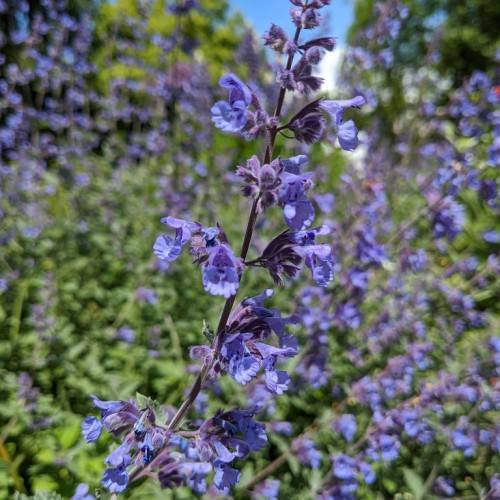
Russian sage
Perovskia atriplicifolia 'CrazyBlue'
Cycle:
Herbaceous Perennial
Watering:
Minimum
Hardiness Zone:
5 - 9
Flowers:
Flowers
Sun:
Full sun
Leaf:
Yes
Growth Rate:
High
Maintenance:
Low
Drought Tolerant:
Yes
Care Level:
Medium
watering
Water Russian sage once every week to 10 days during growing season. When the soil is dry to the touch, give the soil sufficient water so that it reaches about 1-2 inches into the soil. Make sure not to waterlog the soil. It is best to water at the base of the plant and not directly on the leaves. During the winter, when the plants become dormant, water less frequently. Allow the soil to dry out completely between waterings.
sunlight
Russian Sage (Perovksia atriplicifolia 'CazyBlue') grows best in full sun, in order to reach its full size and flower potential. The plant reaches its best form when it is receiving at least 8 or more hours of direct sunlight per day. Although it will tolerate some partial sun, it is important to make sure that this species is getting enough direct sunlight throughout the day in order for it to bloom properly. During the peak of the summer months, Russian Sage should receive as much as 10 or more hours of direct sunlight for optimal growth.
pruning
For Russian sage, pruning should take place in latewinter or early spring. Pruning should be light, removing up to 1/3 of overall height, with an emphasis on removing any dead or diseased growth. When cutting back the plant, avoid cutting back harder than necessary since too much pruning can inhibit the flowering of the plant.
